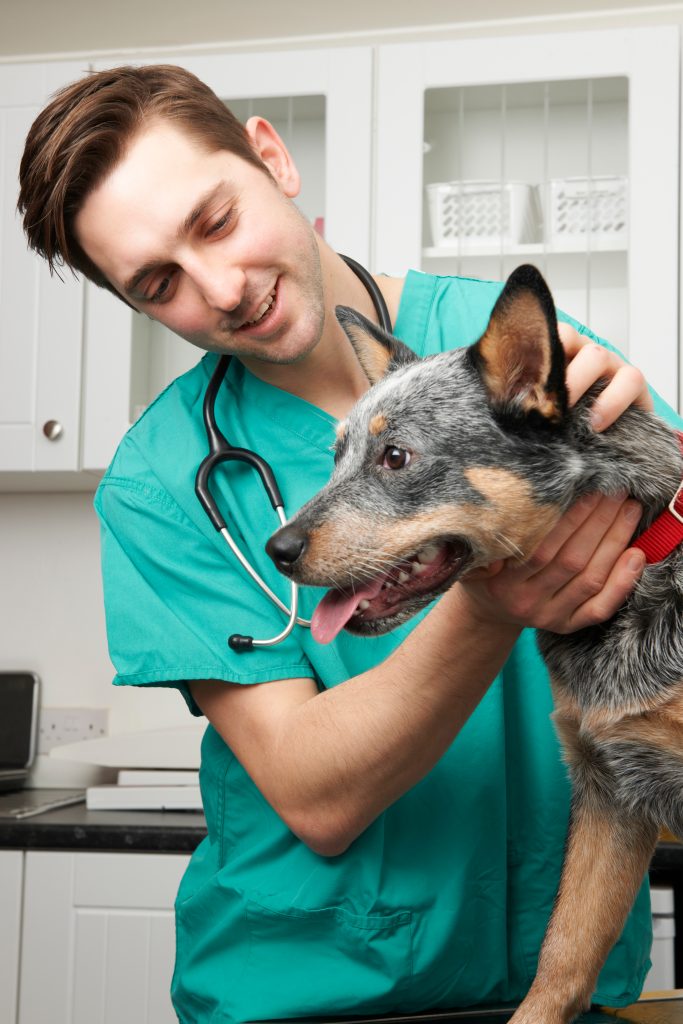Understanding Food Allergies in Dogs
Understanding Food Allergies in Dogs: As devoted dog owners, we strive to ensure they lead happy and healthy lives. However, food allergies and intolerances can pose significant challenges that affect your dog’s wellbeing.
In this informative guide, we will explore the signs and symptoms of food allergies in dogs, the difference between allergies and sensitivities, and how a grain-free diet can offer a solution. Our aim is to empower you with the knowledge to recognise potential issues and take proactive steps towards your dog’s health.
Common Food Allergies and How They Manifest in Dogs

Food allergies in dogs arise when their immune system mistakenly identifies a normally harmless ingredient as a threat.
The most common allergens include proteins, such as beef, chicken, lamb, dairy products, and eggs, as well as some grains like wheat and corn.
The manifestations of food allergies can vary widely, but some common signs to look out for include:
1. Dermatitis: Allergic reactions often manifest as skin issues such as itching, redness, and inflammation. Your dog may develop rashes or hot spots, causing them to scratch excessively.
2. Gastrointestinal Problems: Vomiting, diarrhoea, and excessive gas can be indicators of food allergies. These symptoms can also lead to weight loss and a lack of energy due to compromised digestion.
3. Ear Infections: Dogs suffering from food allergies often experience recurring ear infections, characterised by redness, discharge, and an unpleasant odour.
4. Behavioural Changes: Irritability and changes in behaviour may occur when a dog is in discomfort due to allergic reactions, resulting in anxiety or restlessness.
If you notice any of these signs in your dog, it may be worth considering whether food allergies could be the underlying issue.
Differences Between Allergies and Sensitivities
It is crucial to distinguish between food allergies and food sensitivities, as they differ significantly in their underlying mechanisms and symptoms.
Food Allergies: These involve the immune system. In a food allergy, the immune system responds to a specific protein, sometimes resulting in severe reactions. Symptoms can appear within minutes to hours after ingestion and may escalate rapidly.
Food Sensitivities (or Intolerances): Unlike allergies, sensitivities do not involve the immune system. Symptoms often develop gradually and may include gastrointestinal upsets like gas, bloating, and soft stools. Intolerances may be triggered by non-protein components, such as additives or intolerable fibre levels.
Understanding this distinction is essential for identifying the appropriate dietary changes necessary for your dog’s health.
Role of Diet in Managing and Preventing Allergic Reactions
Diet plays a pivotal role in managing food allergies in dogs.
Choosing the right food can help prevent and alleviate symptoms. Here are a few key factors to consider:
1. High-Quality Ingredients: Selecting a dog food that contains high-quality, whole-food ingredients can reduce the risk of allergic reactions.
Ingredients should be easily digestible to support your dog’s overall digestive health.
2. Limited Ingredient Diets: For dogs with known allergies, limited ingredient diets may be beneficial. These diets typically contain fewer ingredients, making it easier to monitor for potential allergens.
You can gradually introduce new ingredients to determine which ones trigger your dog’s reactions.
3. Novel Proteins and Carbohydrates: Consider exploring novel proteins (like duck, rabbit, or fish) and carbohydrate sources (like sweet potatoes or peas) that your dog may not have previously consumed. This approach can help avoid established allergens and promote a balanced, nourishing diet.
4. Grain-Free Formulas: Grain-free dog foods can be particularly effective for dogs that are sensitive to grains like wheat or corn. By eliminating these potential allergens, you may significantly reduce the chances of allergic reactions occurring.

Introducing a Grain-Free Diet: Steps and Considerations
Transitioning your dog to a grain-free diet involves careful planning and gradual adjustment. Here are some practical steps to consider:
1. Consult Your Veterinarian: Before making any drastic dietary changes, it’s crucial to consult with your veterinarian. They can provide valuable insights into your dog’s specific dietary needs and any potential allergies.
2. Choose the Right Grain-Free Food: Look for high-quality grain-free dog foods that adhere to AAFCO (Association of American Feed Control Officials) guidelines. Broadleaf Grain Free Dog Food products are specifically designed to offer optimal nutrition while avoiding common allergens.
3. Gradual Transition: To prevent digestive upset, gradually transition your dog to the new diet over a period of seven to ten days. Start by mixing a small amount of the new food with your dog’s current food, gradually increasing the proportion of the new food while decreasing the old.
4. Monitor for Reactions: Keep a close eye on your dog during the transition phase, noting any changes in behaviour, appetite, or skin condition. This will help you determine if the grain-free diet is benefiting your pet or if further adjustments are necessary.
When to Consult a Veterinarian and What to Expect During Allergy Testing

If you suspect your dog has food allergies, consulting a veterinarian is the best course of action.
They can conduct a thorough examination and recommend appropriate testing. Here’s what you can expect:
1. History and Symptoms Evaluation: Your veterinarian will take a comprehensive history of your dog’s symptoms, dietary habits, and any previous allergic reactions.
2. Allergy Testing: There are two main types of allergy tests: intradermal skin tests and blood tests.
Skin tests involve introducing small amounts of allergens to the skin, while blood tests measure the immune response to specific allergens.
Your veterinarian will determine which method is most suitable for your dog.
3. Elimination Diet: Often, the most effective method for pinpointing food allergies is an elimination diet trial. This involves feeding your dog a novel protein and carbohydrate source for several weeks while eliminating all other foods to see if symptoms resolve.
4. Follow-Up: Regular follow-ups with your veterinarian will help determine the effectiveness of any new diet or treatment plan, allowing for necessary adjustments along the way.
Understanding food allergies and intolerances in dogs is essential for any responsible pet owner. Recognising the signs and symptoms and differentiating between allergies and sensitivities can lead to early intervention and improved management.
Embracing a grain-free diet may be an effective strategy for many dogs facing these issues, as it can help eliminate common allergens and promote a healthier gut environment.


